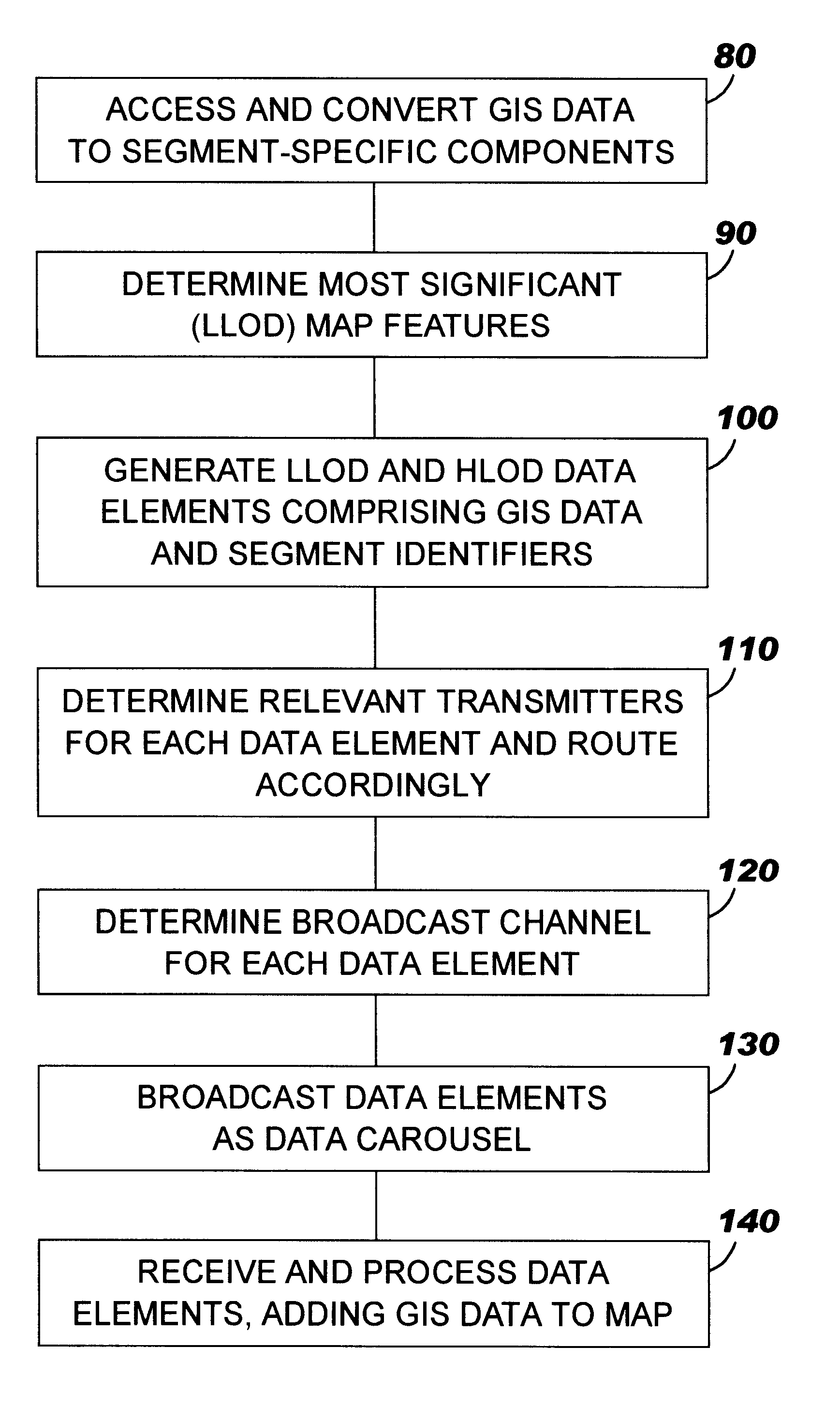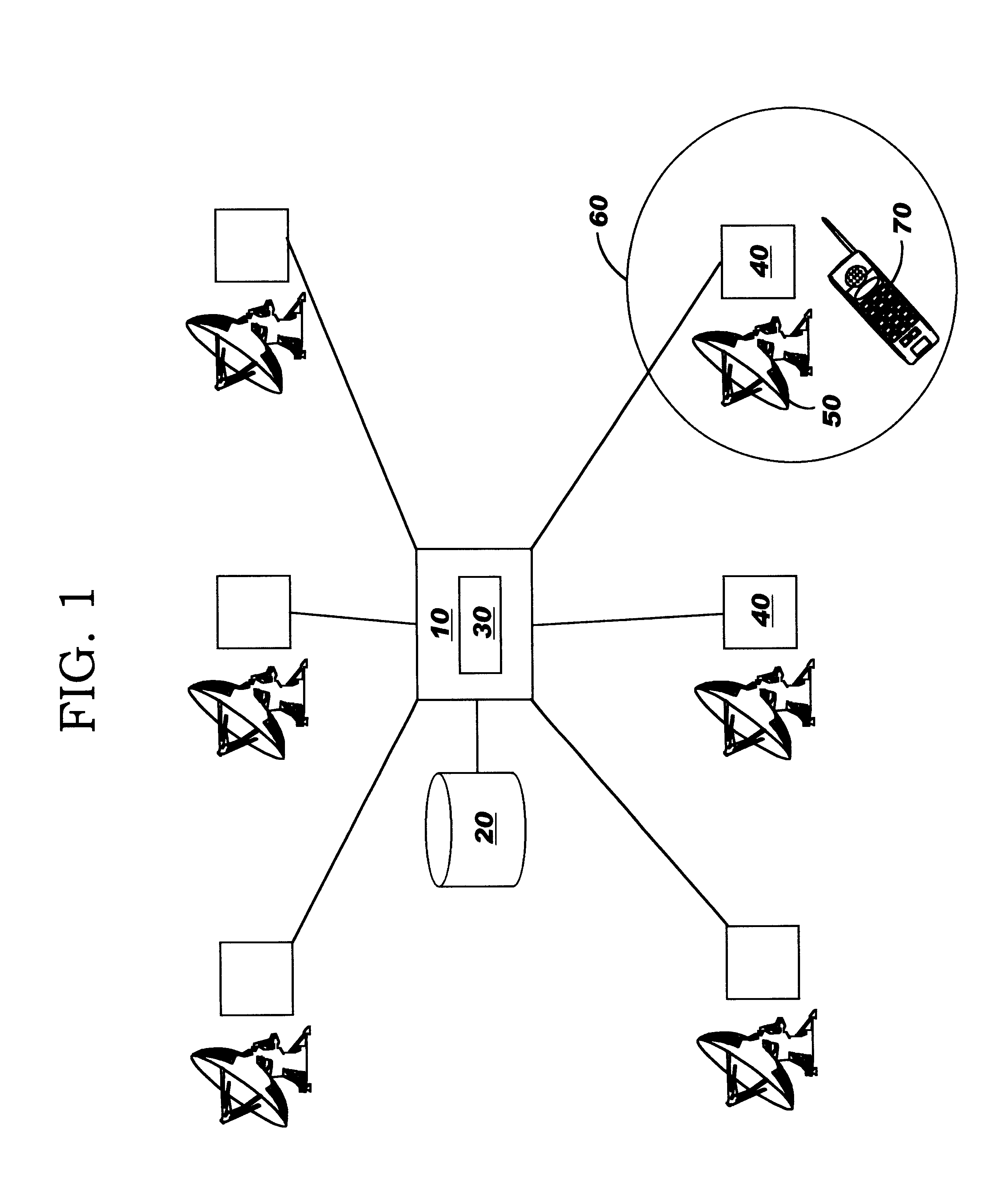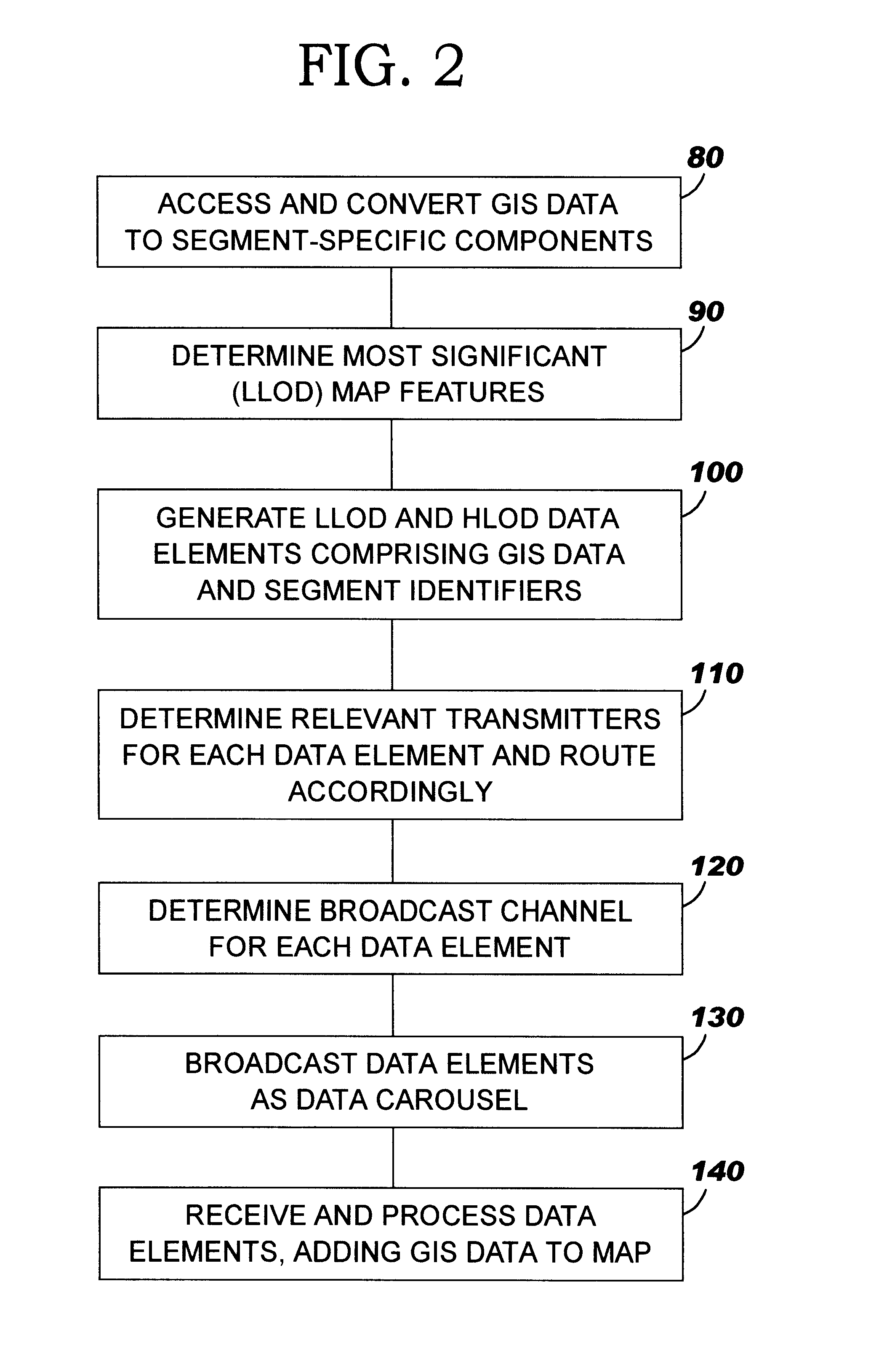Transmission of geographic information to mobile devices
a technology of geographic information and mobile devices, applied in direction finders using radio waves, navigation instruments, instruments, etc., can solve problems such as failures, inability to accurately predict the location of the location, so as to improve the likelihood of successful receipt, the overall picture is built up quickly, and the likelihood of receiving llod data elements is higher.
- Summary
- Abstract
- Description
- Claims
- Application Information
AI Technical Summary
Benefits of technology
Problems solved by technology
Method used
Image
Examples
Embodiment Construction
The present invention may be implemented in a public broadcast network, such as a Digital Audio Broadcasting (DAB) network or a standard analogue FM network such as is currently used for broadcasting the Radio Data Services (RDS) information. A DAB network is preferable because of its higher bandwidth. The invention may also be implemented in any other communications network which includes wireless links to mobile devices (hereafter a "wireless communications network").
A communications network is shown schematically in FIG. 1, with a central server computer system 10 connected to a number of remote computer systems 40 which are each connected to a transmitter 50. The transmitters 50 broadcast data for receipt by any receiving devices 70 within their respective area of coverage 60. The broadcast network is divided into geographic cells, and these cells overlap to provide overall coverage of a country or region.
The central server computer system 10 is connected to a relational databas...
PUM
 Login to View More
Login to View More Abstract
Description
Claims
Application Information
 Login to View More
Login to View More - R&D
- Intellectual Property
- Life Sciences
- Materials
- Tech Scout
- Unparalleled Data Quality
- Higher Quality Content
- 60% Fewer Hallucinations
Browse by: Latest US Patents, China's latest patents, Technical Efficacy Thesaurus, Application Domain, Technology Topic, Popular Technical Reports.
© 2025 PatSnap. All rights reserved.Legal|Privacy policy|Modern Slavery Act Transparency Statement|Sitemap|About US| Contact US: help@patsnap.com



